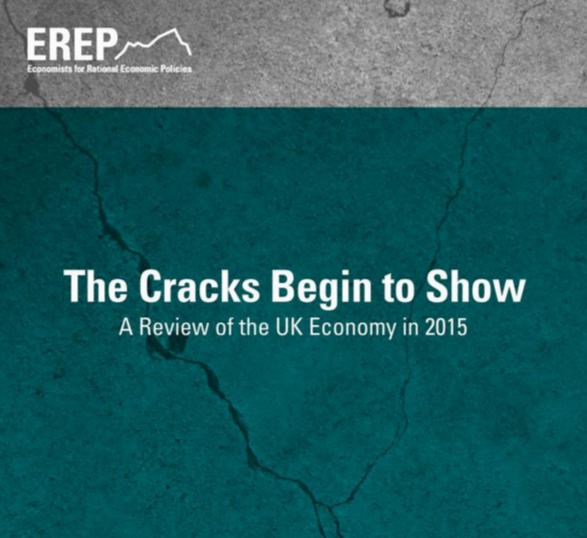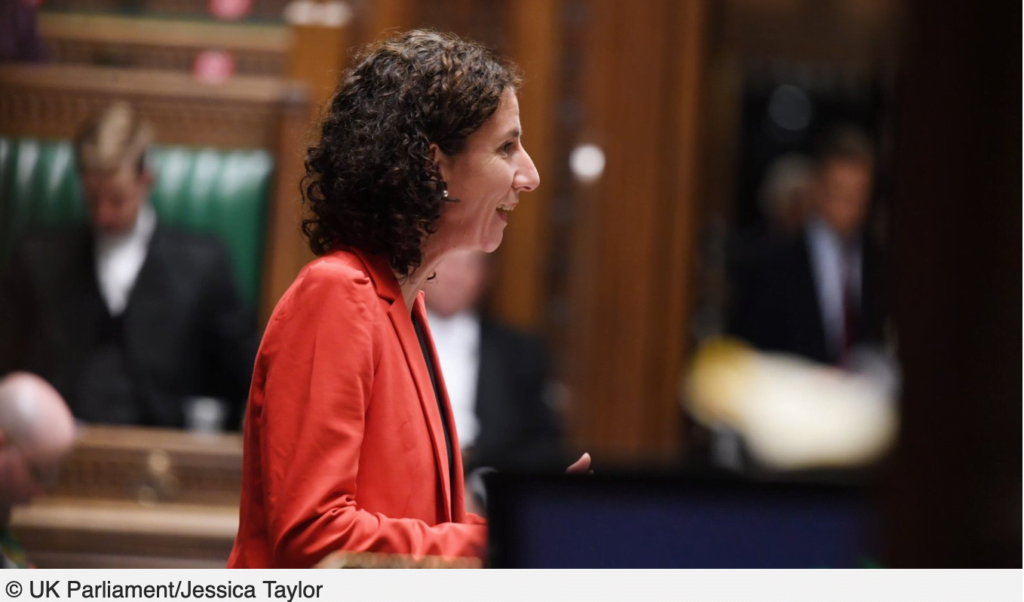
This is Ann Pettifor’s contribution to the EREP review of the UK economy 2015, “the Cracks Begin to Show”. The full report can be downloaded here.
The British Prime Minister declared at Davos in 2012 that he (and his Chancellor) were “fiscal conservatives but monetary radicals injecting cash into the banking system and introducing credit easing measures to make it easier for small businesses to access finance.”
Doubt can be cast over the “fiscal conservatives” claim, as well as the claim that small businesses would benefit from greater access to finance. The major beneficiaries of the government’s lop-sided approach to monetary and fiscal policy are big corporations and the rich – owners of assets whose value are inflated by QE. But the biggest victim of the ‘fiscal conservative’ approach is the government itself. For as we argued in a paper written in 2010 – The Economic Consequences of Mr Osborne [link updated] – “fiscal consolidation does not ‘slash’ the debt, but contributes to it, as the extent of economic recovery becomes increasingly uncertain.”
In cumulative terms [1] the government has borrowed 7.5 percentage points of GDP more than they expected since 2010-11 . And in this year it borrowed more in the first quarter than was originally (2010) planned to borrow in the year as a whole.
This is particularly disappointing given the extremely loose monetary policies adopted by the Bank of England since the onset of the crisis in 2007-9. Lower interest rates combined with the Bank of England’s Asset Purchase Facility (APF) operations have radically reduced the cost of government borrowing – and helped to reduce the need to borrow more, now and in the future.
Thanks to what has come to be known as Quantitative Easing, the Bank of England (BoE) has become directly involved in government debt on a much larger scale and over a longer time period than before. According to the NIESR in their May 2015 Economic Review [2] , since the Bank of England began purchasing government securities in March 2009, the government’s Debt Management Office (DMO) has raised more than £1,037 billion in cash by issuing debt “with a nominal value of £994 billion to the market.” If we assume that interest rates would have been at least 50 basis points higher, argue the NIESR authors, the DMO would have had to issue £70bn more in gilts to raise the same amount of cash.
Furthermore, the “forgone coupon payments on this unissued debt would have stood at £33bn over the life of the bonds” – a direct and additional saving to the fiscal authority. But these are underestimates as there are second-round effects. Thanks to QE the government has saved on further principal and coupon payments into the future – “because the principal and coupon payments on the (£70bn) unissued bonds would have been financed, for a given level of tax income, with new borrowing.” (My emphasis)
When the BoE began purchasing government securities from private debt markets in 2009, the government was obliged to pay interest on those securities to the Bank – just as it would have done to any private bondholder.
However in November, 2012 – worried about his failure to constrain public borrowing and debt – the Chancellor decided that the sums paid over to the BoE would be recycled back to the Treasury, on a regular basis. This was a handy windfall to cut the government’s Central Government Net Cash Requirement (CGNR). As a result, the government needs to borrow less. Fewer bond issues imply lower debt service payments for future generations.
While “radical” monetary policy has proved extraordinarily helpful to the Chancellor, it has done little to help him achieve his own public debt and borrowing reduction goals.
And it should come as no surprise that this one-sided monetary policy approach has failed to increase domestic demand, and with it wages and incomes. To do so would have required greater coordination of monetary and fiscal policy, and in particular the monetary authority’s support for increased public investment.
The Chancellor’s failure to use fiscal policy in tandem with monetary policy means that the timid and short-sighted private sector has lacked confidence to ratchet up investment in productive, income-generating activity – as opposed to speculative activity. This low private and public investment is causal of lower productivity levels, as Geoff Tily has argued. Wage levels in real terms are still over 7% below levels in 2007, and this has led to rises in individual and household borrowing to compensate. The result is the slowest economic recovery in this nation’s history.
Low public borrowing costs provided the ideal environment for increased public investment in, for example, the transformation of the economy away from fossil fuels, and towards more sustainable energy sources. This could be achieved through a programme of activity to increase the energy efficiency of Britain’s leaky housing stock. Such a programme would provide a stimulus to private investment in higher skills, innovation, productivity and job-creation. Such job creation would in turn generate tax income (via the multiplier) to finance the government’s very low debt service costs, and reduce public borrowing and debt.
And such a programme could easily have been financed if only fiscal policy had moved in tandem with monetary policy.
Footnotes:
[1] Source: OBR and Geoff Tily, TUC: Borrowing’s in line with latest forecast, but over four times higher than originally planned
[2] The Impacts of the Bank of England’s Asset Purchases on the Public Finances by Simon Kirby and Jack Meaning. NIESR National Institute Economic Review, No. 232 May 2015, p. F73.






One Response
It seems obvious that the money Osborne has " given away" and the investment which has taken place have not created growth or jobs, but raised the price of fixed assets. The biggest item is housing, followed by other real estate, but other investment markets ( eg art) have boomed too. But higher house prices don’t produce more homes, because the money just feeds into the price of restoring the landbanks. Even more so with other investments: they don’t produce jobs and so they don’t produce tax-take either.
But why does the Office of Budget Responsibility continue to produce irresponsible tax- income forecasts that fail to recognise economic reality? Give a pound to a hundred poor men and they will buy food and clothing. Give a hundred pounds to one rich man and he will dig a hole (in Lichtenstein) and hide it.